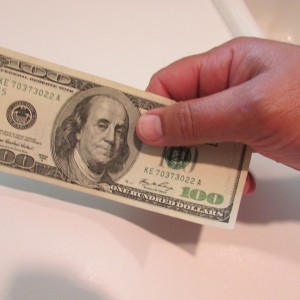02 Jul Bad Spending Habits That Can Be Corrected. A little frugality may lead to a lot of financial progress.
Americans have a great deal of disposable income relative to many other nations, yet our free spending can take us further and further away from the potential for financial freedom. Some people fall into crippling spending habits and injure their finances as a consequence.
Bad habit: failing to save. Saving – saving even $50 or $100 a month – isn’t that hard under most financial conditions. Even so, some households don’t put much of a priority on building a cash reserve of some kind, a portion of which could be used for equity investment.
When you don’t make saving a goal, you don’t have any money to withdraw in a pinch – so if you need to get ahold of some money, where do you find it? Basically, you have three options. One, turn to friends or Mom or Dad. Two, divert money that would go toward a core need (food, rent, the heating bill) toward the sudden crisis. Three, charge your credit card. (There are other options, but they are best not explored.)
Good habit: save just a little, then a lot. You can start a savings campaign by saving “invisibly” – that is, just spending $10 or $1 or $20 less on a regular expense each month. Maybe two or three, even. That’s less than a dollar a day per expense. When your earnings climb further above your financial baseline, you can increase the amount you save/invest.
Bad habit: buying things on a whim. The correlation between impulsive spending and credit card use isn’t too hard to spot. Spending money you don’t have on material items that will soon depreciate doesn’t put you ahead financially.
Good habit: set a budget when you shop. As you arrive at the market, the mall or the local power center, arrive with a limit on what you will spend on that shopping trip and stick to it. Take an hour (or a day) to mull over any big buying decisions – are you buying something you really need? Lastly, use cash whenever you can.
Bad habit: living on margin. Living above your means, charging this and that credit card – this is a path toward runaway debt. You may look rich, but you’ll carry a big financial burden that risks being “out of sight, out of mind” in between credit card statements.
Good habit: strive for lasting affluence, not temporary bling. Possessions symbolize wealth to too many Americans. Real wealth is measured in accumulated assets. They aren’t usually visible, but you can count on them in the future, in contrast to ever-depreciating luxury goods.
Bad habit: buying unnecessary services. Cable subscriptions, extended warranties, service contracts for highly reliable items, health club memberships that translate into little more than an alternate place to shower – they all add up, they all siphon some of our dollars away each month. In many cases, we pay for options rather than necessities.
Good habit: evaluate who benefits most from those services. Are they benefiting the provider more than the consumer? Are they entrees to a “main course” – a steady, long-range financial exploitation?
Go against the norm – it might leave you a little wealthier. In April, Gallup found that 62% of Americans liked saving money more than spending it. Just 34% liked spending more than saving. This appreciation of frugality is relatively new. As recently as 2006, 50% of Americans told Gallup that they enjoyed saving more than spending with 45% preferring spending.1
If we love saving money, a key statistic doesn’t reflect it. According to the Commerce Department, the typical U.S. household was saving 4.8% of its disposable personal income in May. The personal savings rate for 2013 was 4.5%, the least in any year since 2007. Compare that to 6.7% across the 1990s, 9.3% across the 1980s and 11.8% during the 1970s.1,2
Perhaps many of us want to save but can’t due to financial pressures. Perhaps the economic rebound is encouraging personal consumption over saving. Whatever the reason, Americans on the whole don’t seem to be saving very much. That’s the status quo; going against it might help you build wealth a little more easily.
Kevin M. Nast is the President of NastGroup Financial in Northville, MI. He may be reached at nastgroupfinancial.com or 248.347.1888. Kevin also services clients in Bloomfield Hills and the surrounding metro Detroit area as well as 13 additional states across the US.
This material was prepared by MarketingPro, Inc., and does not necessarily represent the views of the presenting party, nor their affiliates. This information has been derived from sources believed to be accurate. Please note – investing involves risk, and past performance is no guarantee of future results. The publisher is not engaged in rendering legal, accounting or other professional services. If assistance is needed, the reader is advised to engage the services of a competent professional. This information should not be construed as investment, tax or legal advice and may not be relied on for the purpose of avoiding any Federal tax penalty. This is neither a solicitation nor recommendation to purchase or sell any investment or insurance product or service, and should not be relied upon as such. All indices are unmanaged and are not illustrative of any particular investment.
Citations.
1 – gallup.com [4/21/14]
2 – bea.gov [6/26/14]





Sorry, the comment form is closed at this time.